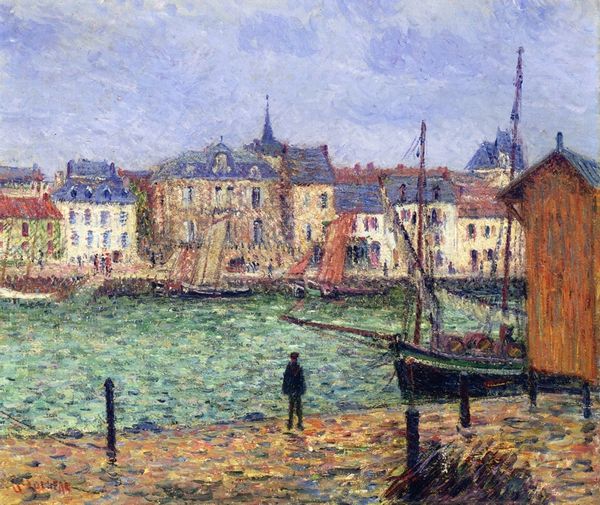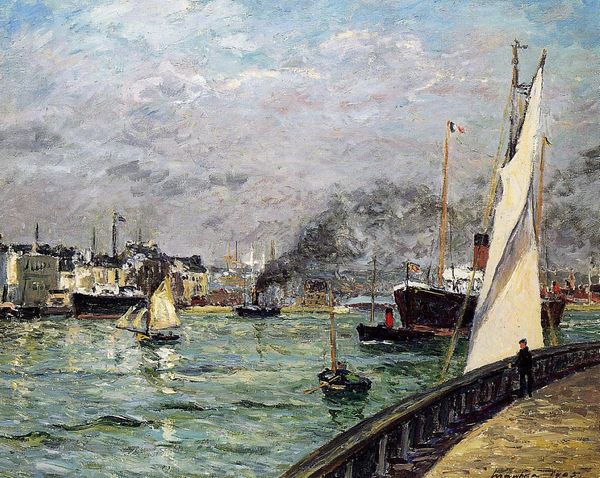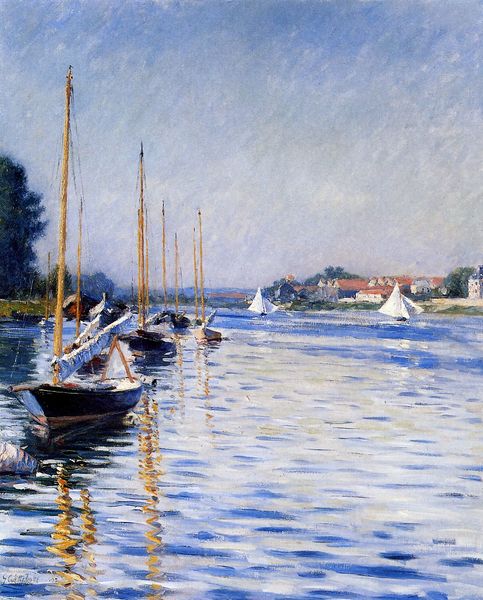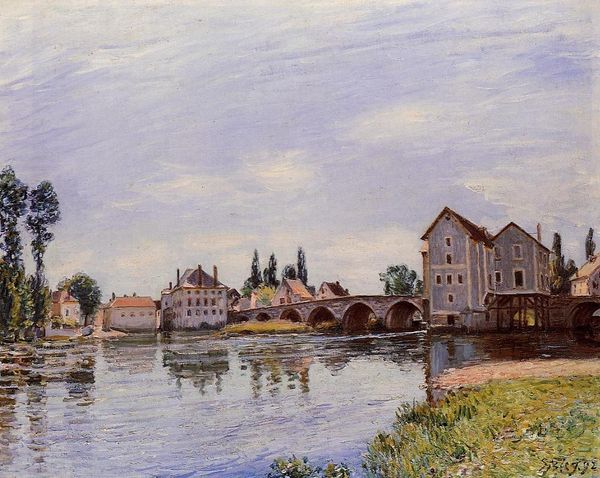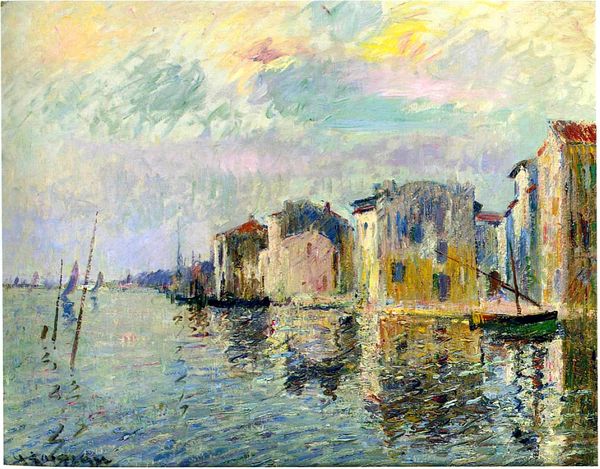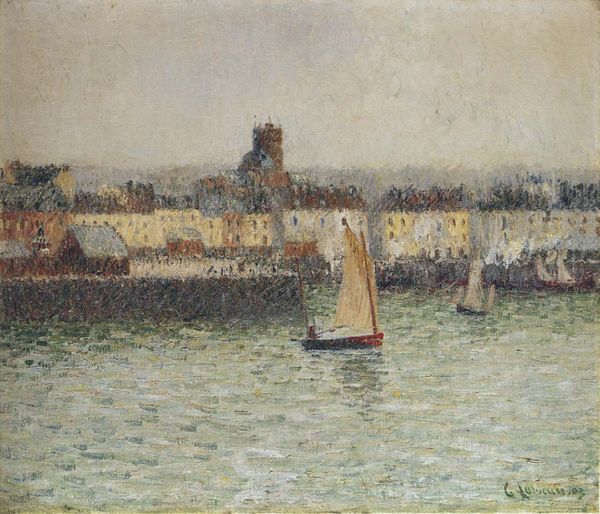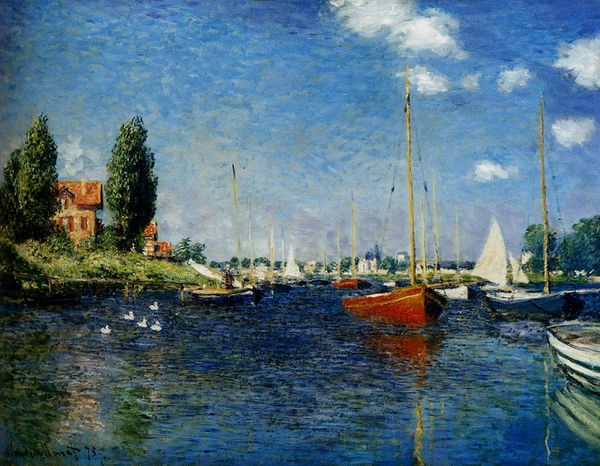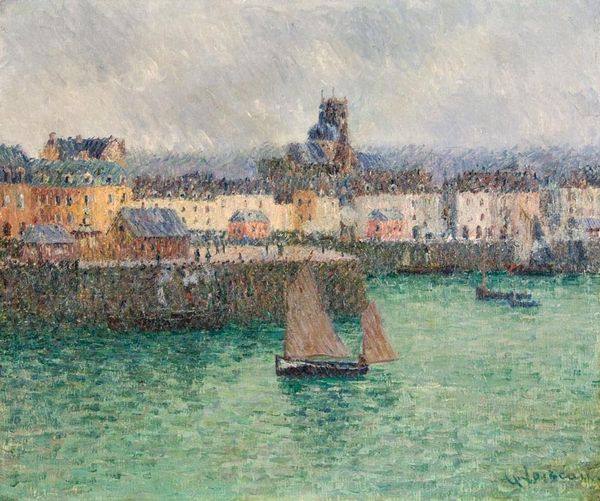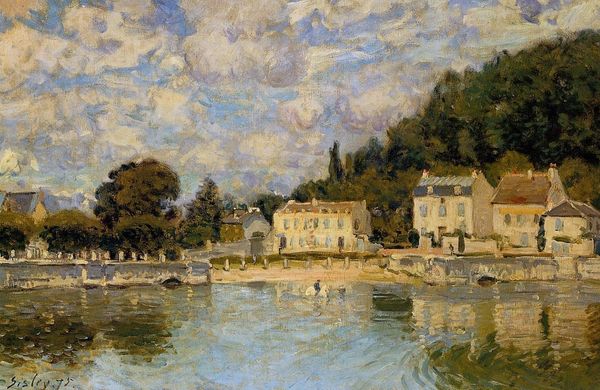
Copyright: Public domain
Curator: Today we're looking at Maxime Maufra's "The Port of Saint-Goustan," an oil painting dating to 1912. Editor: It's instantly appealing; the muted tones create a lovely sense of calm and nostalgia. There’s a real stillness to the water that reflects these picturesque buildings along the harbor. Curator: Maufra was quite committed to the Plein-air style, so his process involved setting up his easel outdoors, striving to capture the transient effects of light and atmosphere. This aligns him with the Impressionist project, although he maintained a somewhat unique perspective. Editor: And you can really see that effect in the reflections; the buildings are almost as clear below the surface as they are above. It's such a gorgeous day to capture the light in the water this way. Curator: It is also worth noting that, historically, the representation of harbors was a common theme associated with trade, expansion and modernization. Saint-Goustan in particular held cultural and strategic importance. Paintings like this reinforced certain visual tropes, especially with rising bourgeois collectors. Editor: I see that, the soft brushstrokes seem to be almost democratizing in style, creating accessibility and romanticizing everyday life and labor, as you mentioned, likely with the intention to attract and soothe the bourgeoise’s perspective of a rapidly changing, colonial-expanding world. Curator: Exactly. Maufra here doesn't emphasize the industrial aspects, unlike some of his contemporaries. The human element is really minimized; this scene seems more focused on the architecture and tranquil scenery of this quiet town. Editor: And I appreciate that minimization. It shifts the narrative. Instead of a glorification of industry, it feels like an invitation to reflect on our place within this larger architectural, social, and environmental ecosystem, even if such wasn't fully conscious on Maufra's part. Curator: So true. It is very thought-provoking to imagine this work presented over a century ago and consider how it reflects and perhaps anticipates some of the ongoing dialogues about our interactions with coastal landscapes and small-town communities. Editor: Looking at "The Port of Saint-Goustan" helps us reconsider how we interpret familiar visual representations by inviting crucial dialogues. Curator: Yes, and in this process, it helps reveal social contexts, as we contemplate the narratives framed and left unsaid within landscape and maritime art.
Comments
No comments
Be the first to comment and join the conversation on the ultimate creative platform.
